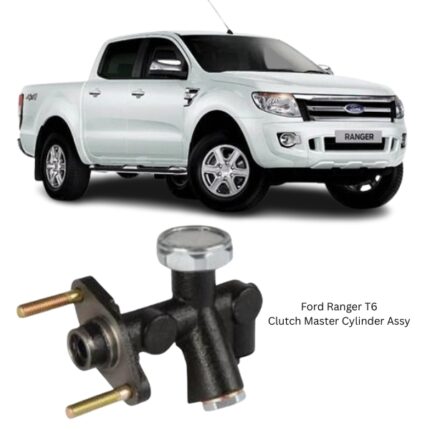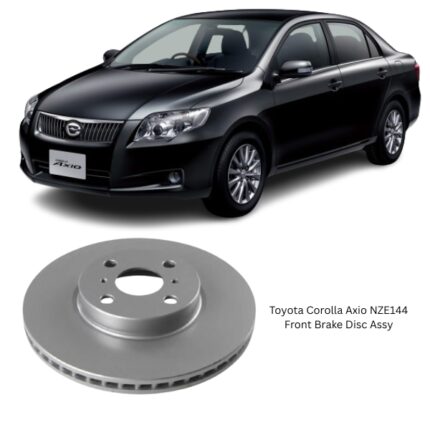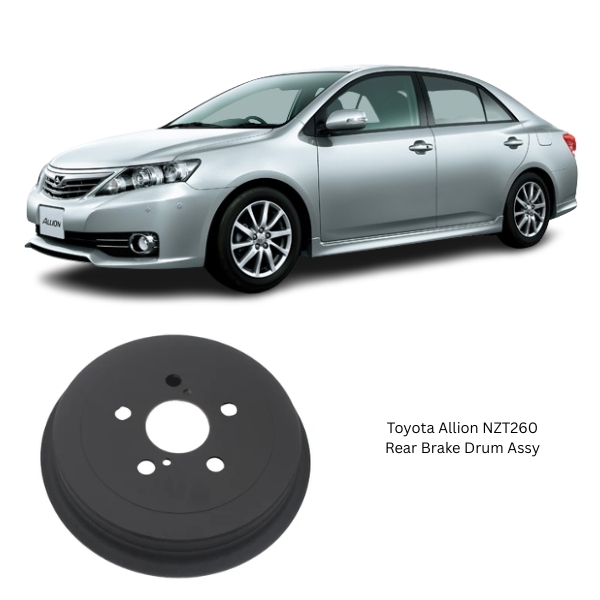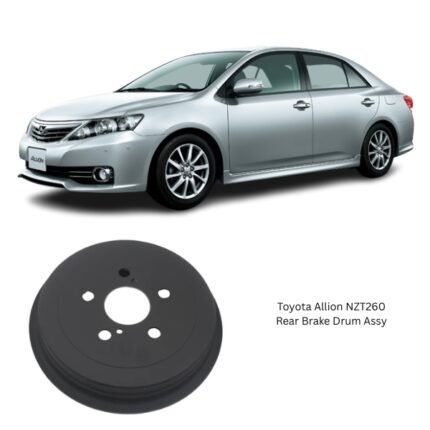Get Toyota Allion NZT260 Rear Brake Drum Assy 42431-20450 in Kenya
The Rear Brake Drum Assembly is a fundamental component of drum brake systems, serving both as the friction surface and the enclosing structure for rear wheel braking. It plays a crucial role in vehicle deceleration by converting the kinetic energy of motion into thermal energy through friction between the drum and brake shoes. This assembly is engineered for strength, durability, and effective heat dissipation—ensuring stable braking performance under a range of load and driving conditions.
Typically found in the rear axle braking configuration of various vehicle types, the brake drum works as part of a hydraulic brake system and provides consistent stopping power when properly maintained. The brake drum’s structural precision and material quality directly impact brake responsiveness, thermal behavior, wear patterns, and overall driving safety.
Functional Overview
The rear brake drum functions by rotating in conjunction with the vehicle’s rear wheels. During braking, hydraulic pressure from the master cylinder forces the brake shoes outward, pressing their friction linings against the inside surface of the rotating drum. This contact generates friction, which resists rotation and slows the wheel.
Once brake pedal pressure is released, return springs pull the brake shoes back to their resting position, allowing the drum to spin freely again. The entire braking action depends on precise alignment, uniform contact, and thermal stability within the drum to ensure smooth deceleration and minimize vibration, brake fade, or noise.
Core Components of the Brake Drum Assembly
A complete Rear Brake Drum Assembly typically comprises the following:
-
Brake Drum (Main Body)
A heavy, cylindrical component made from cast iron or composite alloys. It acts as both the housing for the braking mechanism and the friction surface against which the brake shoes press. -
Backing Plate (Brake Plate)
Serves as the mounting platform for brake shoes, wheel cylinder, springs, and adjusters. It remains stationary while the drum rotates. -
Brake Shoes
Arc-shaped friction elements that expand outward to contact the drum’s inner surface. Each drum brake assembly has two shoes: the leading and trailing shoe. -
Wheel Cylinder
Hydraulic actuator that converts brake fluid pressure into linear motion to push the brake shoes apart. -
Return Springs
Pull brake shoes back after pedal release to maintain a neutral position and prevent dragging. -
Adjuster Mechanism
Maintains proper distance between the shoes and drum over time as the lining wears down. May be manual or self-adjusting. -
Anchor Pin and Retaining Hardware
Secures components and provides pivot points for the shoes during expansion and retraction.
When these components work together in precise harmony, the brake drum assembly ensures strong, fade-resistant, and reliable rear braking.
Material Construction
Brake drums are typically cast from high-carbon or gray cast iron, chosen for its:
-
Excellent thermal conductivity, allowing heat generated by friction to dissipate efficiently.
-
Superior wear resistance, extending lifespan even under heavy use.
-
Vibration-dampening characteristics, which reduce noise and prevent brake judder.
Some modern brake drums may incorporate alloying elements like nickel or chromium or use composite designs that improve corrosion resistance, reduce weight, and enhance structural rigidity.
Thermal Management and Performance
The performance of a brake drum is deeply influenced by its ability to manage the heat generated during braking. Under typical operation, drum surfaces may reach temperatures exceeding 300°C (572°F). Properly designed drums incorporate thermal mass and surface area to absorb and release this heat without warping or losing efficiency.
A well-functioning brake drum assembly prevents:
-
Brake fade: Loss of stopping power due to overheating.
-
Out-of-round conditions: Irregularities in shape that cause vibration.
-
Cracking: Resulting from excessive thermal cycling or over-torquing during installation.
Cooling is aided by the rotational airflow and sometimes by integrated cooling fins or venting channels machined into the outer body of the drum.
Installation and Fitment Considerations
Proper installation of a brake drum assembly involves aligning all internal components within the backing plate, ensuring that:
-
The shoes are centered and not dragging.
-
The wheel cylinder pistons are not seized.
-
The adjuster is correctly tensioned.
-
The drum rotates freely with minimal clearance when at rest.
A precise fit between the brake drum and wheel hub is crucial. Many brake drums are hub-centric, meaning their center bore aligns with the hub to prevent imbalance. The inner surface, or braking surface, must be concentric with the drum’s center axis to avoid pedal pulsation and uneven braking.
During installation, correct torque specification for wheel lug nuts must also be observed. Uneven or excessive torque can distort the drum, causing runout and leading to uneven brake shoe contact and premature wear.
Common Signs of Brake Drum Issues
While designed for longevity, brake drums do wear over time. Common symptoms indicating service or replacement needs include:
-
Squealing or grinding noises: Often due to worn-out brake shoe linings.
-
Brake pedal pulsation: Suggests drum out-of-roundness or hot spots.
-
Reduced braking performance: Could stem from glazed drum surfaces or internal leaks.
-
Excessive pedal travel: Indicates misadjustment or worn components inside the drum.
-
Vibration during braking: Potentially caused by imbalance or warping.
Regular inspection, especially during brake shoe replacement, can identify early signs of wear such as scoring, heat spots, or cracking.
Maintenance and Serviceability
To ensure long service life, the brake drum assembly should be regularly:
-
Inspected for wear, glazing, or scoring on the inner surface.
-
Measured for diameter growth due to wear (measured with a drum micrometer).
-
Cleaned to remove brake dust and contaminants that can impair braking efficiency.
-
Lubricated (non-friction contact points only, such as pivot pins or adjusters) with high-temperature grease.
-
Resurfaced or replaced when wear exceeds manufacturer specifications.
Drums that exceed the maximum wear limit—usually indicated on the outer shell—should be replaced. Continued use of worn drums reduces braking efficiency and can cause uneven shoe wear or system imbalance.
Advantages of Drum Brakes in Rear Applications
Though disc brakes are common on front axles due to their higher cooling efficiency and faster response, drum brakes remain popular in rear axle configurations due to:
-
Mechanical simplicity
-
Lower manufacturing cost
-
Integrated parking brake mechanisms
-
Longer lifespan under typical rear axle load
-
Better self-energizing effect, which reduces required pedal force
The rear brake drum assembly also houses the parking brake system, which uses a lever or motor to mechanically actuate the brake shoes inside the drum, holding the vehicle in place when stationary.
Follow us on Facebook for more parts.





Reviews
Clear filtersThere are no reviews yet.